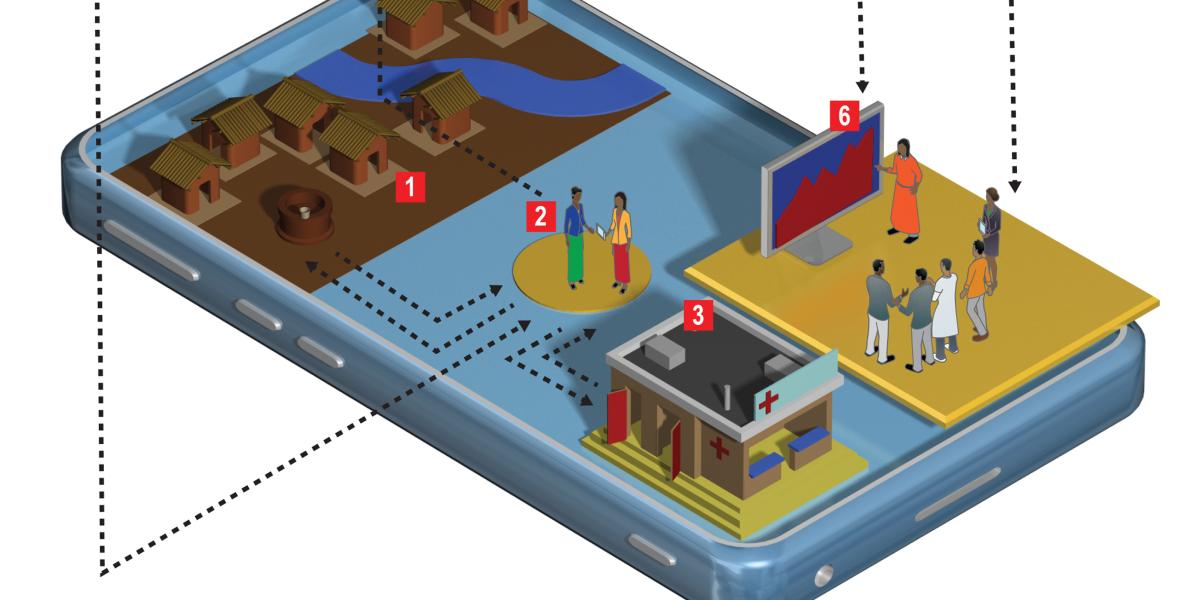The Pocket-Sized Solution
The PMA2020 program collects almost real-time, actionable data on family planning and water.
What if big, seemingly disparate problems in the developing world could be assessed with a single pocket-sized solution?
That’s the idea behind a five-year initiative in Africa and Asia that uses smartphones to collect real-time data on access to contraception methods and other family planning services across 10 countries. Dubbed the Performance Monitoring and Accountability 2020 program (PMA2020), it seeks to fill a dearth of timely data to better monitor women’s health. In the past, researchers had to wait three to five years for new estimates of contraceptive prevalence and related indicators.
When the Bill and Melinda Gates Institute for Population and Reproductive Health began working on PMA2020, researchers knew they needed software expertise and found it from an unlikely source: water researchers at the Bloomberg School. Since 2008, the Johns Hopkins Water Institute has used an open-source survey program called Open Data Kit to conduct door-to-door interviews in Accra, Ghana, about a community water treatment plant. The technology allows researchers to capture 500 interviews with a small team in just one month.
"The new technology allows researchers to update indicators every six months."
PMA2020 is an expansion of this data-collecting method on a grand scale. With funding from the Bill & Melinda Gates Foundation, PMA2020 is training and equipping local women with Android phones loaded with Open Data Kit and sending them out to ask questions about family planning, water and sanitation. The tech strategy is less time-consuming than the paper-and-pencil method, and more reliable, says Scott Radloff, PhD, senior scientist and director of PMA2020. The Indonesian government is replacing an annual paper-and-pencil survey with this more efficient approach.
The project already has delivered valuable insights. Government leaders, program managers and researchers are using PMA2020 data to help plan and budget for expanded family planning services. Data has revealed increasing contraception use in the Democratic Republic of the Congo, Ethiopia and Kenya.
“We want to showcase the results so we can drive policy changes,” says Luke MacDonald, PhD, deputy director of the Johns Hopkins Water Institute and senior mobile technology advisor for PMA2020. He hopes the survey indicates barriers to water and sanitation access, and guides future development.
SURVEYING THE SURVEY
- PMA2020 has completed a first round of surveys in 7 African countries: Burkina Faso, Democratic Republic of the Congo, Ethiopia, Ghana, Kenya, Nigeria and Uganda.
- Additional surveys are also planned for India, Indonesia and Niger.
- Researchers update the data with a new round of surveys every 6 months for the first 2 years in each country.
- For the last 3 years, data will be updated annually.
- PMA2020 has logged more than 100,000 interviews with households and health care facilities since June 2013.
- “One of the attractions of this approach is that we can more regularly monitor progress,” Radloff says, leading to more immediate interventions at the local, regional and national levels.
AN INNOVATIVE PROCESS

- Data Collection: Each enumerator interviews 35 to 40 households and up to 6 health care facilities in one round of data collection. PMA2020 will train 1,000+ female enumerators across 10 countries.
- Data Entry: The enumerators enter answers to questions about water supply, sanitation, family hygiene practices and access to contraceptive methods using simple, touch-screen technology.
- Service Delivery Point: GPS tracking on smartphones pinpoints the location of a household or health clinic.
- Aggregation: Once an enumerator completes a survey, she uploads it to a central cloud server, eliminating the process of transferring information from paper to an electronic form. Data is transfered via GPS networks. The community receives feedback in the form of key indicators and visuals, which are also transferred via GPS.
- Validation and Analysis: Collected data is immediately processed and populated into predesigned graphs and charts in an accessible format to showcase the survey results in close to real time.
- Dissemination: Researchers disseminate the results to local governments and NGOs to improve health interventions and publish the findings online.
